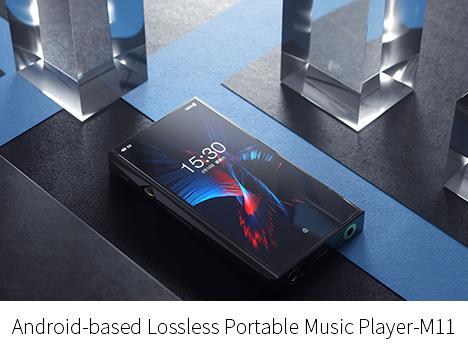Recently,there have been some interesting developments in the world of DAPs, you might want to give them a look if you're looking to make the most of your portable listening. Selecting a high-resolution DAP can be daunting. They come in all shapes, sizes, and price points. We’ve outlined some main features you should look out for.
1. The Format file types the DAP can support
As you might know, the higher the pixel count in an image, the higher the detail. The ability of DAPs to play super-high bitrates is directly linked to the above mentioned DAC chipsets, and we do quote the highest possible values - in some cases, those can be as high as 768 kHz, which is seventeen times the density of a CD uncompressed audio (44.1kHz)!
Audio encoding keeps evolving. We recommend that you look for a player that supports, at a minimum, ALAC, DSD, and FLAC files since those are the most common codecs that high-resolution download sites use.
You can see a full review here about types of formats
2. Storage capacity
High-resolution music files are significantly larger than MP3s or iTunes AAC-encoded files. If you’ve never uploaded a super-high resolution (say DSD256) audio library into a top-notch DAP player, you might be forgiven for thinking that. High-resolution DAPs have both internal storage and expandable storage via microSD card slots. We suggested having minimum internal storage of 32GB and at least one—preferably two—microSD slots.
Good digital audio players normally ship with at least 64GB of internal hard drive space, and manufacturers quote the maximum space that one can upgrade to. The expandable storage varies between 512G and up to two terabytes; a great example for the latter is the Fiio M11 with two slots which has a stunning two terabytes of storage support.
3. DAP Operating Systems
What is an operating system exactly you might ask? It’s the software system that lets you interact with your player, allowing you to play songs, skip tracks, connect to Bluetooth and the like, all through a dedicated interface. Everything you’re used to seeing in your smartphone. Aside from physical characteristics, differences between OS can be dramatic, and they can make or break your overall experience.
Some players are based on the Android operating system, if you are an Android smart device user, you will immediately feel at home with the majority of DAPs. Other players have proprietary user interfaces with a touchscreen, a click wheel, or navigation buttons. The player’s user interface can influence what you can and can’t do on the player (such as searches) and how easily you can perform certain tasks (such as creating playlists). It’s just worth keeping your ears perked for reviews mentioning Operating System bugs when shopping around - they can prove more annoying than one might think.
Systems open or closed, it means you can install other APP or not which is very important.
Two operating systems of Ibasso DX220
4. Bluetooth
Nearly all high-res players come with Bluetooth now. Some hi-end DAPs even support dual BlueTooth ( Reception and transmission).
If you plan on using Bluetooth wireless headphones with your digital audio player, we recommend that the player supports aptX, which promises near CD-quality wireless playback. Some latest DAPs also supports aptX HD, which enables the player to stream digital audio files with 24-bit resolution and sampling rates as high as 48kHz (i.e., better-than-CD quality). With both codecs, the player and the headphones you pair with them must be capable of supporting the codec.
The BlueTooth vision of DAP's manufactures opts are evolving, as you might know, BlueTooth 5.0 is twice of speed and four times of ranges and it provides a better connection, low power consumption, and large message capacity etc - iBasso DX220 with Bluetooth 5.0
Improvements in Bluetooth 5.0 in details
We feel that many future DAP models might feature with BlueTooth 5.0 in 2020.
5. Connections
Balanced connections provide a better signal-to-noise ratio. balanced outputs offer an impedance-balancing (between the individual wires) effect on the connected cable, resulting in a better transference of the audio signal.
Balanced connections found on portable audio equipment require the so-called 4-point plugs TRRS jacks (Tip, Ring, Ring, Sleeve). They have the same shape as regular small headphone jacks (3.5mm) but are either slightly smaller (2.5mm) or in very few instances slightly larger (4.4mm).
Fiio’s different amp modules can fit that bill, and Shanling also offers an equivalent. Things can go a lot further than that allowing audio professionals to turn their DAP in a fully-equipped ultra-high-end field audio recorder by adding A/D (analog to digital) conversion and support for external condenser microphones and recording.
9 Common connection types of Digital Audio Player | DAP101 - Part 5





Leave a comment
All comments are moderated before being published.
This site is protected by hCaptcha and the hCaptcha Privacy Policy and Terms of Service apply.